An old saying goes: “The first casualty of war is truth”. If that is the case, then its second victim may very well be good data. Since the full-scale invasion of Ukraine by the Russian army in early 2022, the Russian economy has turned into a war economy – and that also means that the Russian state, faced with Western sanctions, has further curtailed transparency in the country’s economy.
The Government of the Russian Federation has limited reporting duties for legal entities that are subject to foreign sanctions, a measure which has also impacted the Russian Unified State Register of Legal Entities. We use this dataset to find and include subsidiaries and directors of sanctioned companies.

Credit: Steve Jurvetson on flickr
The Russian Unified State Register of Legal Entities (EGRUL), maintained and published by the Federal Tax Service, is the company register for the entire Russian Federation. It contains basic information such as company names, registration numbers and tax identifiers, but also more detailed information such as classifiers describing the type of goods or services produced, company directors and ownership information. And credit where credit is due: this degree of transparency is uncommon in most other parts of the world, including in European and US jurisdictions.
A lot of this information, however, has simply disappeared from the registry files of sanctioned companies. Below is an excerpt from the company record for a sanctioned holding company owning majority shares in several other sanctioned companies. As of January 1, 2022, the Russian company register listed two owners. An up-to-date PDF excerpt from the official website of the Federal Tax Service of Russia still indicates two ownership records exist. The records themselves, however, are unavailable and marked as “restricted”, with the information having been disappeared on December 12, 2024 (screenshot translated from Russian original).
This has presented a challenge. It’s our principle to faithfully represent whatever statements we find in the data sources that we cover. At the same time, our data product is meant to inform its users about potential risk in working with counterparties. We’ve tried to strike that balance by until now relying on an extract of the EGRUL data dated January 1, 2022, in order to retain information on the ownership and control hierarchies of sanctioned companies. While the reported data was outdated, it was also less likely to have been falsified.
(The EU was a bit slower to realize this, but validated our decision earlier this month with Council Decision 2025/904: “In cases where Russian legislation allows for the suppression or the concealment of information contained in national public registers or databases, or the entry of false or misleading information therein, it is appropriate for the last available information dating from before 24 February 2022 to be considered accurate unless more recent and reliable information is available”, the decision said.)
However, sourcing only this increasingly outdated information also means missing accurately updated information such as addresses, ownership information and information about the legal directors of Russian companies.
We have been exploring a new approach to this issue in recent weeks. By merging both up-to-date and historic data, we can now provide a more complete picture. Our data factory now ingests the current feed of updates to the Russian company register, going all the way back to January 1, 2022, crunching through over 100GB of compressed XML files. We’re processing the latest information on ownership and legal directors on a regular basis and represent those relationships that disappeared (or were disappeared down the memory hole) as ended relationships in our data model.
This approach also allows us to chart the scope of registry amnesia: There are 6,513 Russian companies sanctioned under the Western sanctions regime that we have been able to cross-reference to their entries in the company register. Out of those, 393 have had the access to either their ownership or their directorship records (or both!) restricted.
Igor Kesaev for example, a prominent businessman well acquainted with Western sanctions lists, may have instructed a purge of all of his ownership records from the company register. This could make it more difficult to track his network of companies, only some of which have so far been sanctioned. Our data now makes this information about Mr. Kesaev’s network of companies accessible, even though it has been purged from the public register.
Enriching global sanctions lists with data from the Russian company register (and many more such sources), allows new insights into networks that dealing with can present risks. Who knew that the annexation of Crimea gave rise to new media moguls directing over a dozen companies and that war drones can be a viable family business?
While we make this data available to our clients, we also invite journalists and academics to dive into the revamped EGRUL data. We provide a list of companies (as OpenSanctions IDs) that have had their directorship or ownership information restricted in the company register as a starting point.
Please get in touch if you have any feedback or questions on this!
